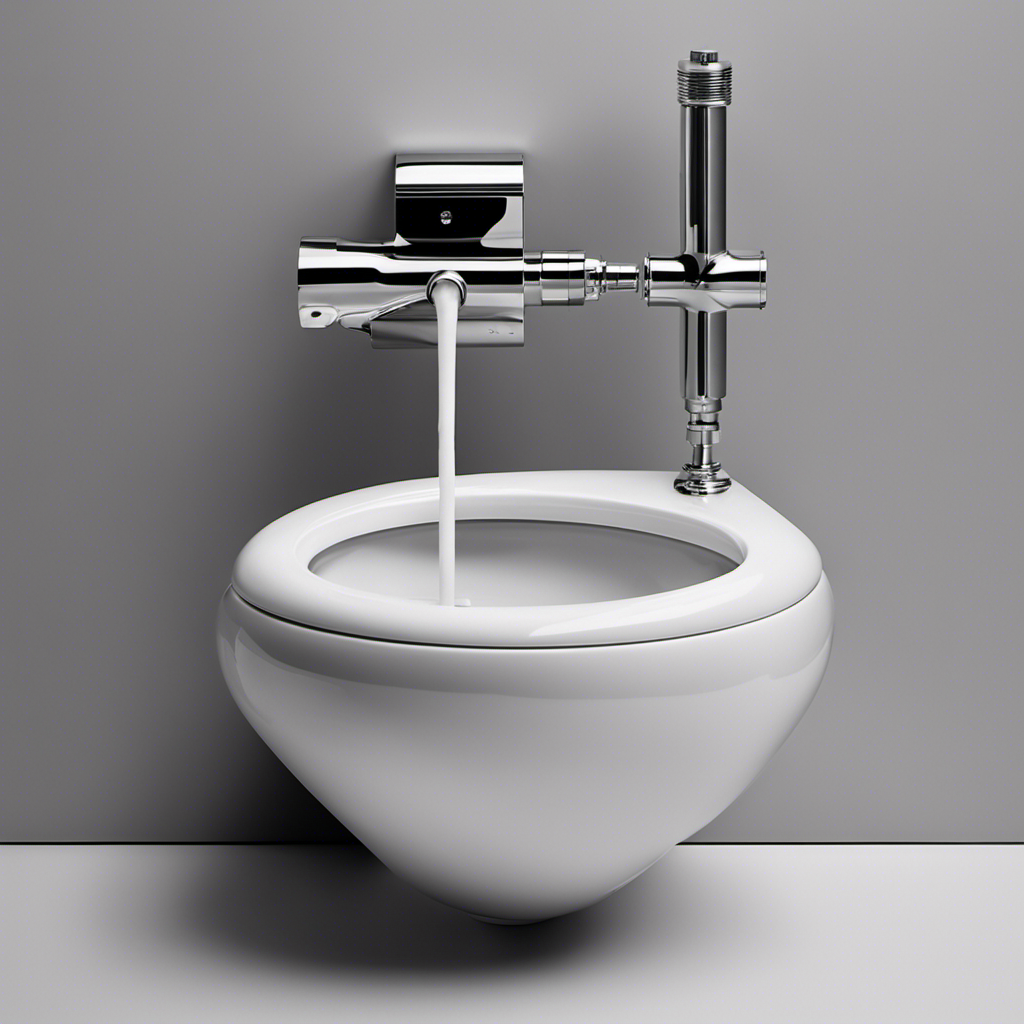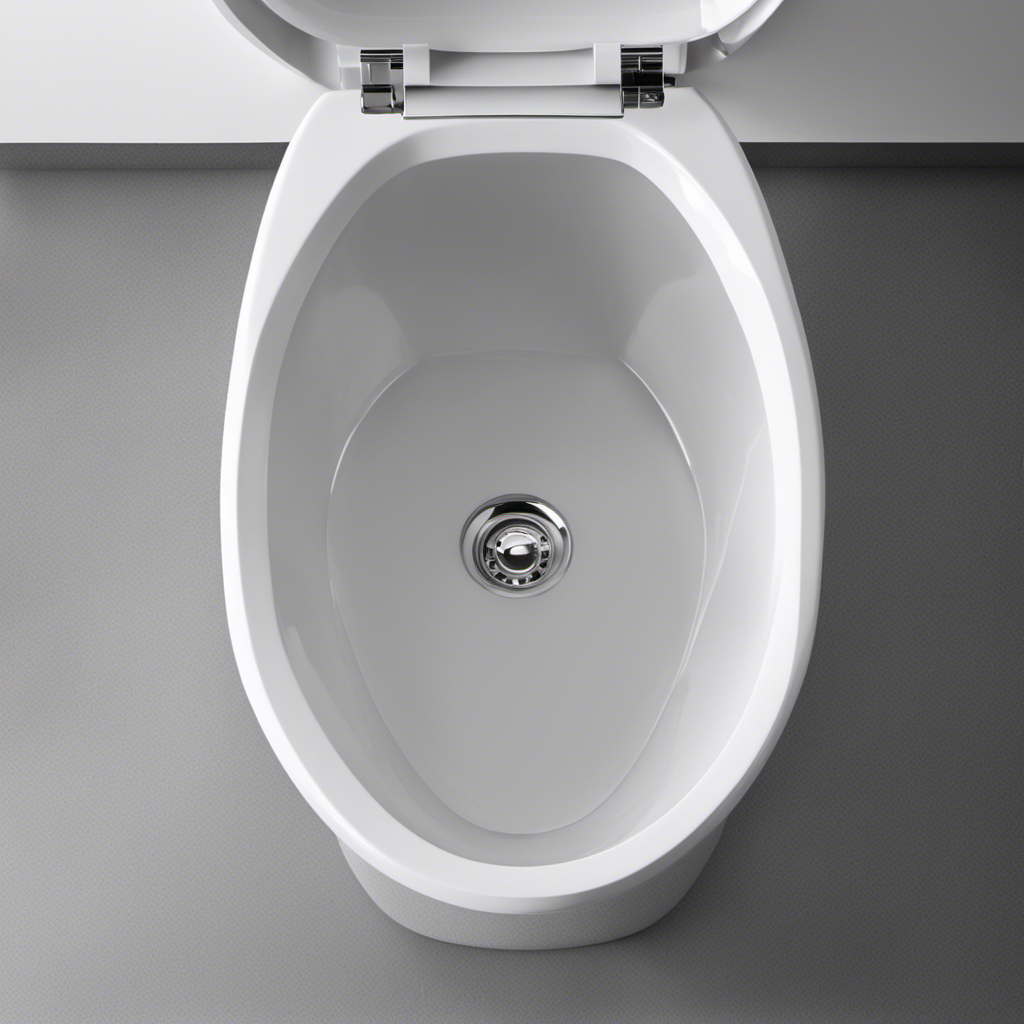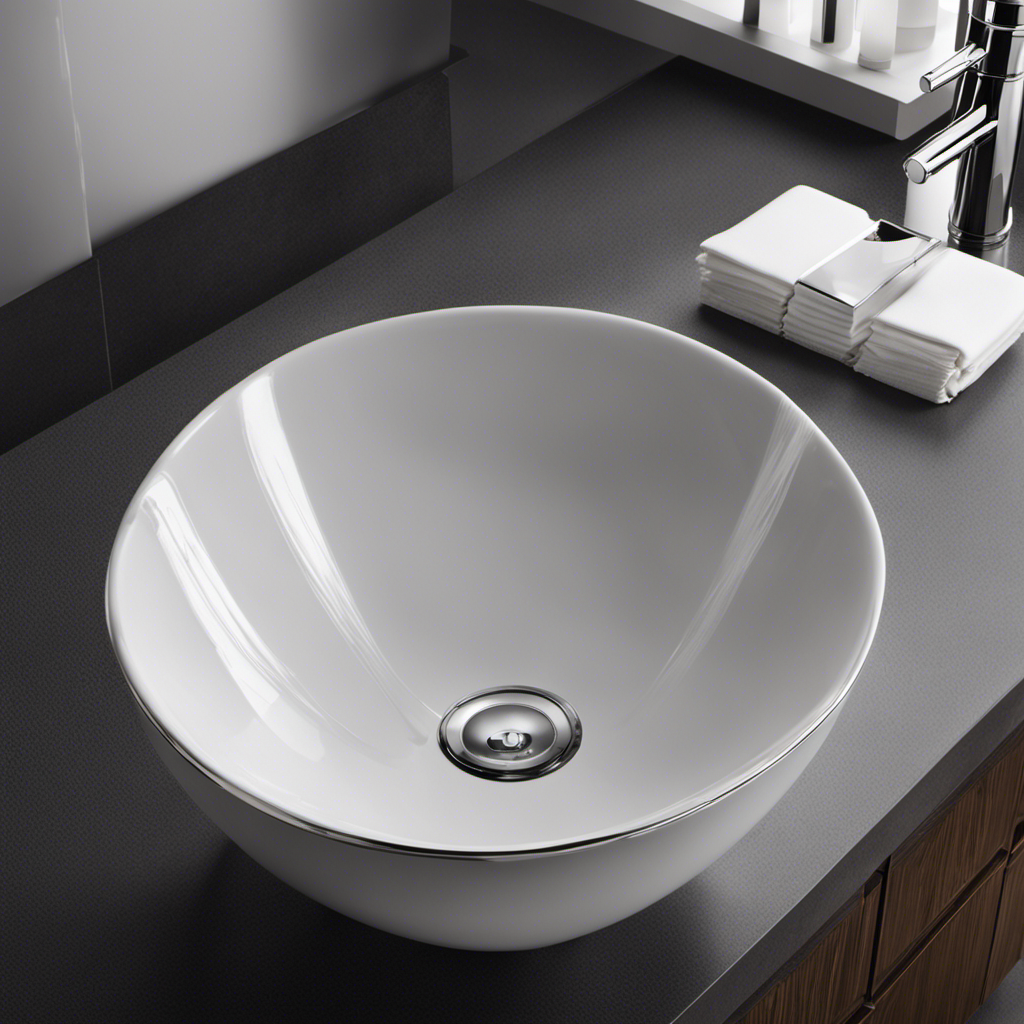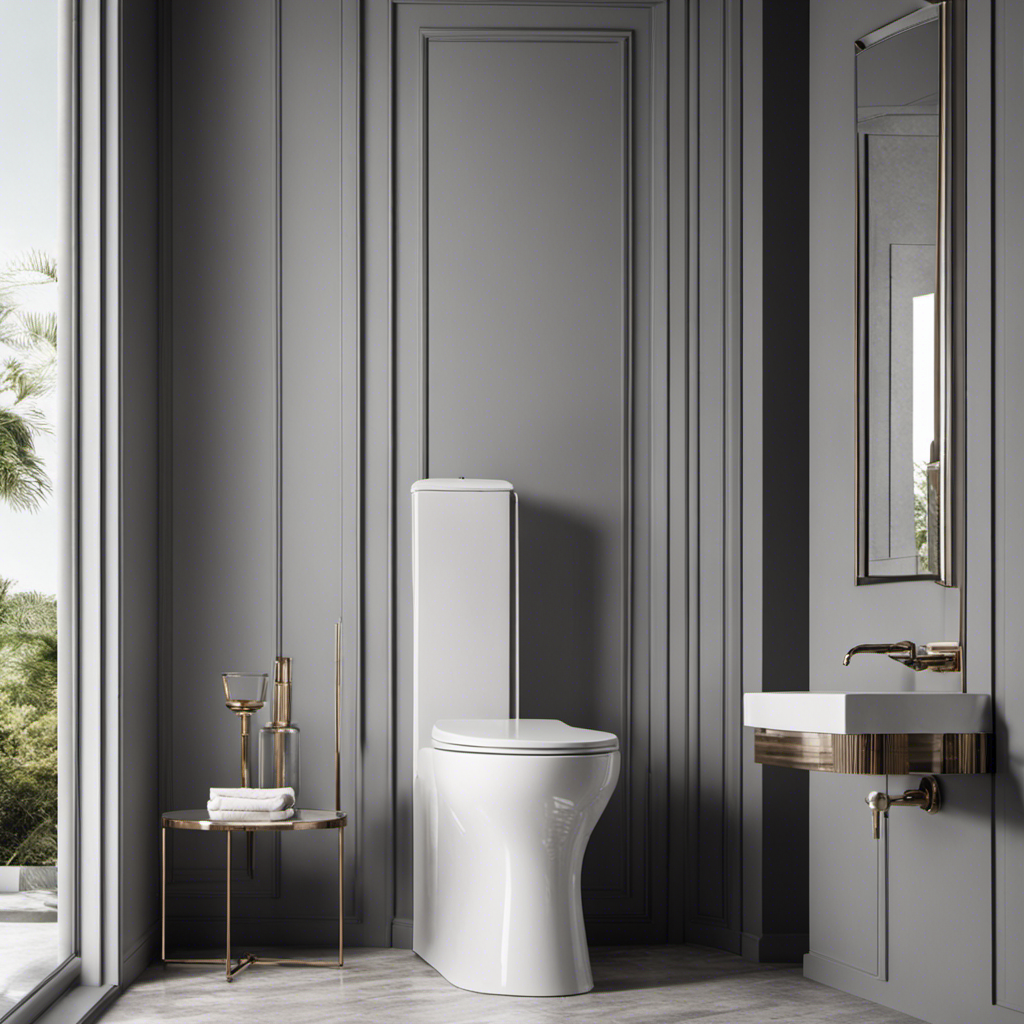As I sit here on my porcelain throne, it’s fascinating to think about how this ingenious contraption actually works. The toilet flush valve, a marvel of engineering, is responsible for whisking away our waste with a simple press of a lever.
In this article, we will delve into the inner workings of this unsung hero of our bathrooms. From the fill valve to the flapper mechanism, we’ll explore the intricate dance that takes place behind the scenes to ensure a clean, efficient flush every time.
Key Takeaways
- The toilet flush valve is responsible for connecting the tank to the bowl and preventing water leakage.
- The flapper covers the flush valve opening and allows water to rush into the bowl.
- Regular maintenance, such as inspections and cleanings, is necessary to ensure proper functioning of the fill valve and flapper seal.
- Water flow and pressure directly affect the efficiency and effectiveness of the flush valve, so it is important to consider these factors for optimal flushing.
Components of a Toilet Flush Valve
To understand how a toilet flush valve works, you should know about its components.
The main components of a toilet flush valve are the flush valve body, the flapper, the overflow tube, and the fill valve.
The flush valve body is a plastic or metal part that connects the toilet tank to the bowl. It contains a seal that prevents water from leaking into the bowl until you flush.
The flapper is a rubber or plastic disc that covers the flush valve opening. When you press the flush lever, it lifts the flapper and allows water to rush into the bowl.
The overflow tube prevents the tank from overflowing by diverting excess water into the bowl.
The fill valve controls the water level in the tank by opening and closing to let water in.
Proper toilet flush valve installation and regular toilet flush valve maintenance are important to ensure the smooth operation of your toilet.
The Role of the Fill Valve in Flushing
The fill valve controls the water flow to refill the toilet tank after flushing. It is an essential component of the flushing mechanism, ensuring proper water level and efficient flushing. To maintain the fill valve, regular inspections and cleanings are necessary. Sediment buildup and debris can affect its performance, leading to slow or incomplete refilling. If maintenance is no longer sufficient, a fill valve replacement may be required. This involves shutting off the water supply, disconnecting the old valve, and installing a new one. It is important to choose a compatible fill valve that fits the toilet model. Regular maintenance and prompt replacement of a faulty fill valve will help keep your toilet functioning properly and prevent water wastage.
| Emotion | Reason |
|---|---|
| Frustration | Inefficient flushing due to a faulty fill valve can be frustrating. |
| Concern | Water wastage caused by a malfunctioning fill valve is a cause for concern. |
| Relief | Regular maintenance and replacement of the fill valve can bring relief by ensuring proper toilet function. |
Understanding the Flapper Mechanism
When it comes to the flapper mechanism in a toilet, there are several key points to understand.
First and foremost, the flapper seal plays a crucial role in preventing water from leaking into the bowl when the toilet is not in use. It is important to regularly check and replace the flapper seal if it becomes worn or damaged.
Additionally, proper flapper chain adjustment is essential for ensuring the smooth operation of the flush mechanism. The chain should have just enough slack to allow the flapper to fully close and create a watertight seal, but not so much that it gets tangled or prevents the flapper from opening fully during a flush.
Lastly, if the flapper needs to be replaced, there are simple steps to follow to ensure a successful and effective installation.
Flapper Seal Importance
Make sure you regularly check and replace the flapper seal in your toilet flush valve to prevent leaks.
The flapper seal, also known as the tank ball or flush ball, is a crucial component of the flush valve system. It creates a watertight seal between the tank and the bowl, preventing water from continuously flowing into the bowl.
Over time, the flapper seal can deteriorate due to constant exposure to water and chemicals. This can lead to leaks, causing water wastage and potential damage to your bathroom floor.
By regularly inspecting and replacing the flapper seal, you can ensure its proper functioning and prevent any leaks. Look for signs of wear and tear, such as cracks, warping, or discoloration, and replace the seal if necessary.
This simple maintenance task will help maintain the flapper’s durability and prevent any potential issues with your toilet flush valve.
Flapper Chain Adjustment
Regularly adjusting the flapper chain ensures proper functioning of the toilet’s flush mechanism. The flapper chain is an essential component that connects the flush handle to the flapper valve.
Over time, the chain may become loose or too tight, causing problems with the toilet’s flushing action. To maintain the flapper chain, start by locating the chain adjustment clip near the flapper valve. Use a pair of pliers to loosen or tighten the clip as needed, ensuring there is enough slack for the flapper to close fully but not so much that it gets tangled.
If the flapper chain is severely damaged or beyond repair, it may be necessary to replace it entirely. In such cases, a new chain can be easily obtained from a hardware store or plumbing supply shop.
Regular flapper chain maintenance and prompt replacement when necessary will help keep your toilet flushing smoothly.
Flapper Replacement Steps
To replace the flapper, start by turning off the water supply to your toilet. This is important for safety and to prevent any water damage.
Once the water supply is off, you can proceed with the flapper replacement. First, remove the tank lid and locate the flapper, which is usually at the bottom of the tank. Disconnect the chain from the flush lever and remove the old flapper from the flush valve. Inspect the flapper for any signs of wear or damage. If necessary, clean the flapper or replace it with a new one.
Install the new flapper by attaching it to the flush valve and reconnecting the chain to the flush lever. Finally, turn on the water supply and check for any leaks.
Now, let’s move on to how the flush lever activates the valve.
How the Flush Lever Activates the Valve
When you press the flush lever, it activates the valve to release water into the toilet bowl.
The flush lever mechanism consists of a lever connected to a chain or rod, which is attached to the flush valve. When you push down on the lever, it lifts the flush valve, allowing water to flow from the tank into the bowl.
This lever operation is a simple yet effective way to initiate the flushing process. It is designed to be easily accessible and intuitive for users.
Once the valve is activated, water rushes into the bowl, creating a strong flow and pressure that effectively flushes away waste.
This water flow and pressure will be further discussed in the subsequent section about the ‘water flow and pressure in a flush valve.’
Water Flow and Pressure in a Flush Valve
In this discussion, I’ll be focusing on the valve function and design, as well as the impact of water pressure in a flush valve.
The valve plays a crucial role in controlling the water flow and ensuring a proper flush. Understanding its function and design is essential for troubleshooting any issues that may arise.
Additionally, the water pressure in the valve directly affects the efficiency and effectiveness of the flush. So it’s important to consider its impact in order to optimize the flushing process.
Valve Function and Design
The flush valve controls the flow of water from the toilet tank to the bowl. There are two main types of flush valves commonly used in toilets: the flapper valve and the canister valve.
The flapper valve is a rubber or silicone disc that is attached to a hinge at the bottom of the tank. When the flush lever is pressed, it lifts the flapper valve, allowing water to rush into the bowl.
The canister valve, on the other hand, uses a seal and a piston mechanism to control the flow of water.
Both types of valves require regular maintenance to ensure proper functioning. This includes checking for any leaks, replacing worn-out parts, and cleaning any debris that may cause clogging. Proper valve maintenance is essential for efficient flushing and preventing water wastage.
Now, let’s examine the impact of water pressure on the flush valve.
Impact of Water Pressure
To ensure efficient flushing, you should regularly check and maintain the flush valve’s ability to handle different water pressures. Proper water pressure regulation is crucial for the optimal functioning of a toilet. Here are some key points to consider:
- Water pressure regulation:
- High water pressure can cause the flush valve to open too forcefully, resulting in excessive water usage and potential damage to the valve.
- Low water pressure may prevent the valve from opening fully, leading to incomplete flushing and potential clogging.
- Maintaining the flush valve’s ability to handle varying water pressures ensures consistent performance and water conservation.
Troubleshooting Common Flush Valve Issues
One common flush valve issue is when it won’t stop running after flushing. This can be caused by a few common problems that can easily be troubleshooted.
First, check the flapper. If it is worn out or not sealing properly, it could be allowing water to continuously flow into the bowl.
Another potential issue may be a faulty fill valve. If the fill valve is not shutting off properly, it will continue to allow water to flow into the tank.
Additionally, a stuck float can also cause the flush valve to keep running. Make sure the float is not stuck in the up position, as this will prevent the valve from closing.
Conclusion
In conclusion, understanding how a toilet flush valve works is essential for maintaining a properly functioning toilet.
The components of the flush valve, such as the fill valve and flapper mechanism, work together to ensure a smooth and efficient flush.
By activating the flush lever, water flow and pressure are regulated to create a powerful flush.
Troubleshooting common flush valve issues can help alleviate any problems that may arise.
So, next time you flush your toilet, remember that the flush valve is like a conductor orchestrating a symphony of water.










